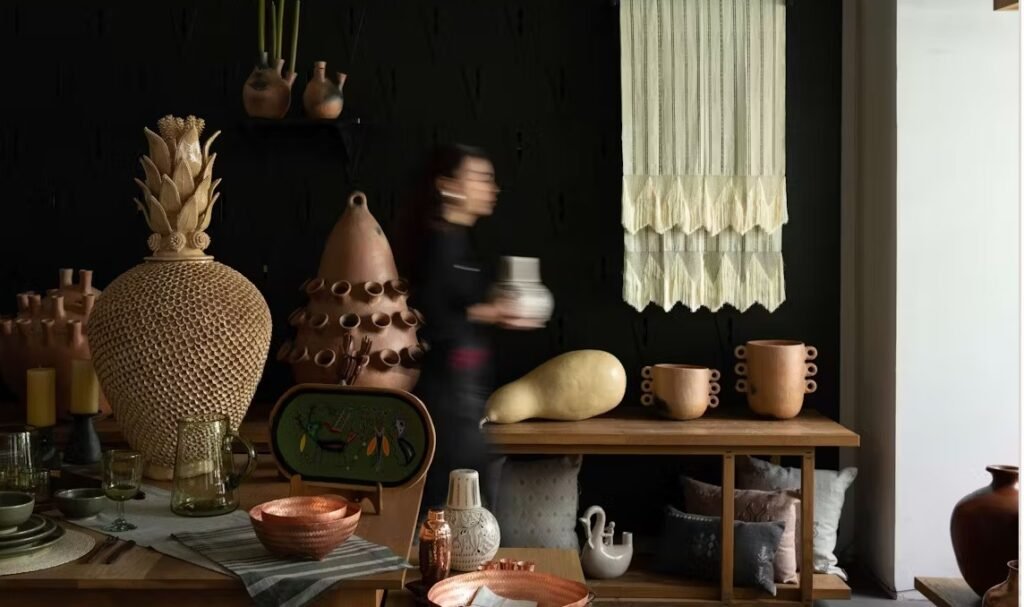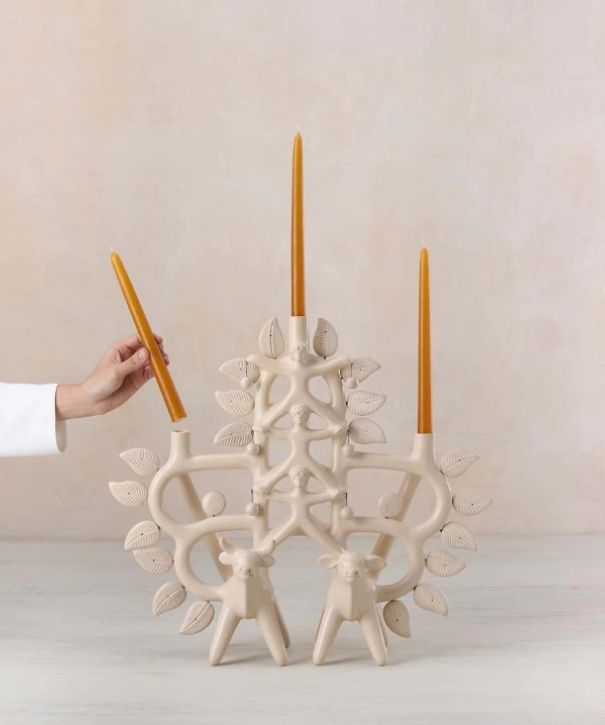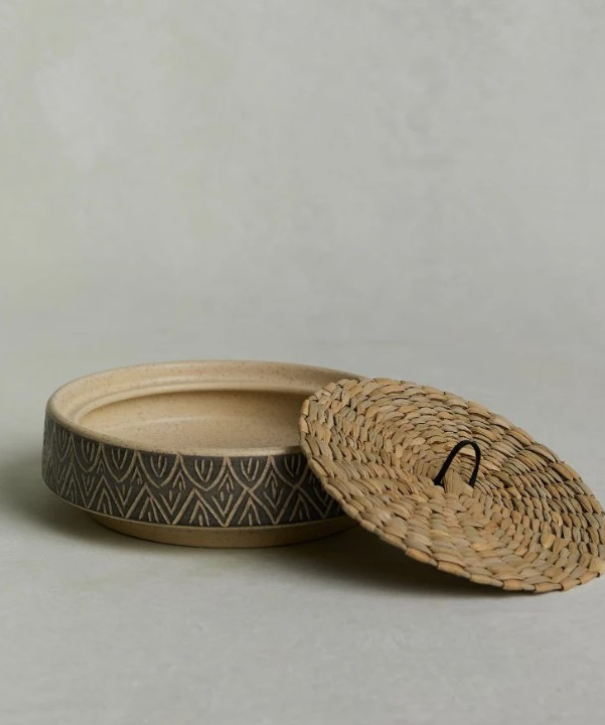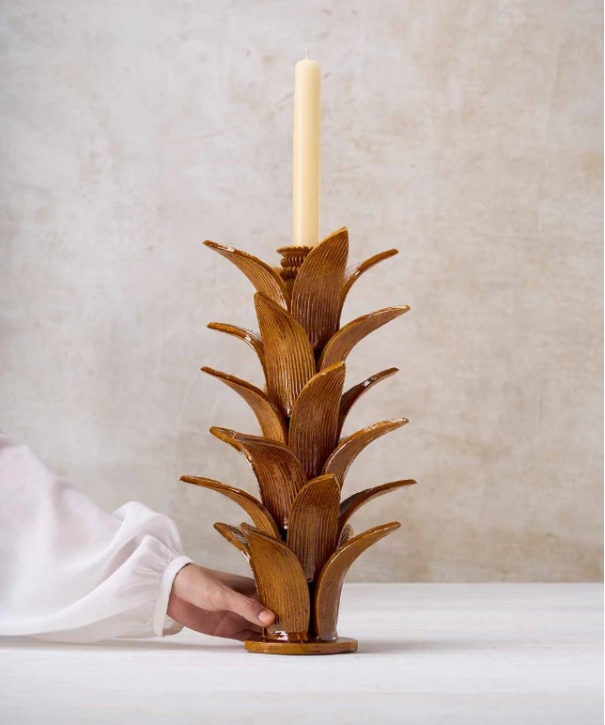
ONORA
Home Decor
A closer look at ONORA and the power of craft.
Founded in 2013 by the talented duo María Eladia Hagerman and Maggie Galton, ONORA, also known as Onora Casa, is so much more than just a design studio. Based in the vibrant heart of Mexico City, this company is on a mission to honor traditional Mexican crafts while giving them a fresh twist for modern life. They work closely with master artisans across the country, showing deep respect for cultural heritage and a strong commitment to preservation.
Inspired by potter Herón Martínez Mendoza, the Acatlán line celebrates the fine burnished pottery of Acatlán de Osorio.
Acatlán Collection
The Acatlán Collection honors the rich tradition of burnished pottery from Acatlán de Osorio, Puebla, and draws inspiration from the renowned artist Herón Martínez Mendoza.
Originally known for his functional clay vessels, Martínez became celebrated for his whimsical, sculptural creations: fantastical animals, stacked performers, and intricate Trees of Life. His distinctive works, often featuring burnished surfaces and pre-Hispanic motifs, have found homes in museums and private collections worldwide, radiating a joyful, surreal spirit.
In contrast, ONORA’s tribute embraces a quieter form yet carries the same reverence and creativity. Each piece undergoes an intricate seven-step process, from carefully sourcing local clay to the final hand-polishing that gives it a soft, luminous glow. The result is a collection of contemporary objects that echo the playful essence of Martínez’s work while remaining firmly rooted in the present.
Xale Collection
The Xale Collection is a striking blend of traditional technique and modern restraint.
Each piece is wheel-thrown, hand-scraped, glazed, and high-fired in the second-generation Jasso workshop in Valle de Bravo. The designs draw from Mesoamerican ceramic motifs, featuring hand-etched geometric patterns that add both visual and tactile depth. Reviews often note how these textures invite touch, the scribed lines along rims and surfaces reveal the artisan’s hand in every stage of the process.
The matte glaze is highly durable, making each piece as functional as it is elegant. Some designs are topped with handwoven chuspata lids, a subtle yet powerful pairing of clay and natural fiber that echoes the enduring dialogue between materials in traditional Mexican craft.
Even from afar, these pieces speak softly but with intention. There’s a grounded beauty in how they hold history without becoming purely ornamental: honest, well-made forms, shaped with care.
Embodying the essence of nature, the Onora Sorgo Candleholder from the Saint Joseph Collection draws inspiration from the elegant stalks of corn and sorghum, which nourish so many across the globe.
Saint Joseph Collection
The Saint Joseph Collection was created in collaboration with the Hernández family of San José de Gracia, Michoacán, a town celebrated for its sculptural ceramic pineapples that balance the ornate and the grounded, the traditional and the playful.
ONORA was drawn as much to the process as to the finished pieces. Each form is crafted using pastillaje, a hand technique where small bits of clay are pinched and placed onto a vessel’s surface, often forming petals, spines, or delicate flourishes.
This technique has deep roots in Mexican ceramics, but it was the late Teodora Blanco Núñez of Santa María Atzompa, Oaxaca, who brought it widespread recognition. Teodora developed an iconic style of clay figures known as muñecas: unpainted women with braided hair, flowing skirts, and dresses adorned with sculpted floral details. Her pastillaje was intricate, delicate, and bold, adding both texture and narrative to every surface. ONORA’s approach to pastillaje is quieter but deeply respectful of this lineage. The Sorgo Candleholder, for example, is adorned with clay embellishments added while the body is still damp, then sealed with vidriado, a glass-like glaze introduced during Mexico’s colonial era. This gives each piece its gentle sheen and lasting strength, striking a balance between soft touch and structural durability. It’s the kind of craftsmanship you notice slowly, details that reveal themselves over time, like stories unfolding.
Chenalhó Sapos Pillow
And we can’t forget the textiles!
The Chenalhó Sapos Collection, crafted in Chenalhó, Chiapas, shows how embroidery can carry myth. Inspired by Mayan beliefs, these designs honor the ancient connection between toads and saints. Elders say that when frogs sing after a rain, they delight the saints, who then bless the land with more rain. Each cover stitches together a quiet cycle of gratitude and nature.
I love these textiles not just for how they look, but for the meanings they hold. For me, craft is never just technique, it’s a language for passing down what people believe about nature, balance, and our place in the world.
And Chenalhó is just the beginning. ONORA’s textile collections span other towns, techniques, and motifs: sacred brocaded symbols woven on backstrap looms in San Andrés Larrainzar, or hand-spun wool covers dyed with natural pigments and woven on pedal looms in Contla, Tlaxcala. Each piece is a testament to the patience and mastery that shape everyday things into heirlooms.
Explore ONORA’s site for more discoveries, each piece telling a story rooted in the history and the people who keep these traditions alive.





